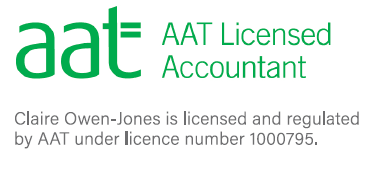Have you ever looked at your bank balance and wondered where all the money has gone?
The way cash flows through our businesses is rarely a surprise. After a while you can easily memorise the regular direct debits, the wages, the loan repayments and the client retainers. You learn which customers pay quickly and which ones make you wait. The same often goes for your own relationship with your suppliers.
Equally, you often know which months are tight. These are the months where the annual renewals fall such as insurances and licences. This knowledge gives you the option to save during the year for these expenses, try to get more sales during these periods or simply grin and bear it.
But sometimes things feel tight and we have no idea why.
If you look at the balance sheet on your accounting software or your annual accounts, you'll see a section called current assets.
If your business needs to get hold of cash quickly, then aside from getting a loan or dipping into your overdraft, you would go to your current assets.
There's your bank accounts and petty cash. I don't think many people would not go to these first if you needed money.
Then there's the money owed to you by your customers. These are a current asset because if you needed to get hold of money quickly, a couple of calls to people who already owe you money is another fast financing option.
Then there is your stock. Now stock can consist of a couple of things. It could literally goods that you've purchased which are sat in your store cupboard or warehouse ready to be sold or used. However, stock can also be classed as work in progress – so jobs that are midway through completion but no money has been received.
So, how can a current asset like stock be a negative?
As we're focusing on cash flow…
You pay out for stock and then it sits there, like cash on a shelf, for however long it takes for you to sell it. If you can shift this quickly then that's fine, but otherwise it's like putting bags of pound coins in a box and walking away.
Sometimes stock devalues. You could go out and buy a bulk of clothing and then seasons change, fashion moves on and you're left with rails of clothes that no one wants. Food stock can pass it's sell by date. Fragile stock can get damaged. All of this means that you will not get the return that you expected. You could be throwing money away.
We don't like taking payment for something that we haven't done yet. It's easier to hand over cash for goods as the exchange is often instant. The contract is quick. When we are providing a service, the general feeling is that you must do something before the money is exchanged. It's the need to build up some goodwill for your intangible goods before anyone is willing to pay.
We see stock as a good thing. After all it's a current asset. You need to get hold of some extra cash so you sell some stock or you ask for an advance payment.
The problem is, this can have a ninja like effect on your cash flow because you can end up spending more without realising it. How often have you bought more than you initially intended just to get a discount? Maybe you throw a couple of extra items into the shopping trolley just to see how your customers take to them.
When you are scanning your bank account to see where your money has gone, you may not notice the additional stock purchases because they will look like your regular suppliers. Plus, you can justify the expense far more easily. After all, you can sell it and get your money back.
You can also be spending out of providing your service. Paying for the software. Buying the building materials. All of which feels like genuine and valued business expenditure.
So, what should you do?
Getting the balance of how much stock to hold in your business is hard and ultimately very subjective. No one wants to be the shop who must turn away customers because they don't have the required item to hand.
However, poor stock control works both ways. If you are under stocked, then you could be sending customers directly to your better stocked competitors. Plus, keeping minimal levels could also mean that you waste large amounts of time, and money, buying more stock – whether this is additional trips to the cash and carry, multiple postages or missed discounts.
The problem is that it is easier to see the negatives of not holding enough stock, so we often go the other way.
I recommend keeping an eye on what stock you hold. Try to monitor what lines sell quickly or are more likely to be bought in bulk by your customers so you keep more of these on hand. However, slow movers or items that you can source very quickly, could cope with a more minimal approach.
If you have lots of work in progress, then you may want to consider getting your customers to pay you in advance or in instalments during the job. Having too many jobs in mid-completion can mean that you are spending out lots of money on if service before you get a penny back.
Ultimately, your goal should be to keep more money in your bank account and less of it in your stock room or your customers' pockets.
The way cash flows through our businesses is rarely a surprise. After a while you can easily memorise the regular direct debits, the wages, the loan repayments and the client retainers. You learn which customers pay quickly and which ones make you wait. The same often goes for your own relationship with your suppliers.
Equally, you often know which months are tight. These are the months where the annual renewals fall such as insurances and licences. This knowledge gives you the option to save during the year for these expenses, try to get more sales during these periods or simply grin and bear it.
But sometimes things feel tight and we have no idea why.
If you look at the balance sheet on your accounting software or your annual accounts, you'll see a section called current assets.
If your business needs to get hold of cash quickly, then aside from getting a loan or dipping into your overdraft, you would go to your current assets.
There's your bank accounts and petty cash. I don't think many people would not go to these first if you needed money.
Then there's the money owed to you by your customers. These are a current asset because if you needed to get hold of money quickly, a couple of calls to people who already owe you money is another fast financing option.
Then there is your stock. Now stock can consist of a couple of things. It could literally goods that you've purchased which are sat in your store cupboard or warehouse ready to be sold or used. However, stock can also be classed as work in progress – so jobs that are midway through completion but no money has been received.
So, how can a current asset like stock be a negative?
As we're focusing on cash flow…
You pay out for stock and then it sits there, like cash on a shelf, for however long it takes for you to sell it. If you can shift this quickly then that's fine, but otherwise it's like putting bags of pound coins in a box and walking away.
Sometimes stock devalues. You could go out and buy a bulk of clothing and then seasons change, fashion moves on and you're left with rails of clothes that no one wants. Food stock can pass it's sell by date. Fragile stock can get damaged. All of this means that you will not get the return that you expected. You could be throwing money away.
We don't like taking payment for something that we haven't done yet. It's easier to hand over cash for goods as the exchange is often instant. The contract is quick. When we are providing a service, the general feeling is that you must do something before the money is exchanged. It's the need to build up some goodwill for your intangible goods before anyone is willing to pay.
We see stock as a good thing. After all it's a current asset. You need to get hold of some extra cash so you sell some stock or you ask for an advance payment.
The problem is, this can have a ninja like effect on your cash flow because you can end up spending more without realising it. How often have you bought more than you initially intended just to get a discount? Maybe you throw a couple of extra items into the shopping trolley just to see how your customers take to them.
When you are scanning your bank account to see where your money has gone, you may not notice the additional stock purchases because they will look like your regular suppliers. Plus, you can justify the expense far more easily. After all, you can sell it and get your money back.
You can also be spending out of providing your service. Paying for the software. Buying the building materials. All of which feels like genuine and valued business expenditure.
So, what should you do?
Getting the balance of how much stock to hold in your business is hard and ultimately very subjective. No one wants to be the shop who must turn away customers because they don't have the required item to hand.
However, poor stock control works both ways. If you are under stocked, then you could be sending customers directly to your better stocked competitors. Plus, keeping minimal levels could also mean that you waste large amounts of time, and money, buying more stock – whether this is additional trips to the cash and carry, multiple postages or missed discounts.
The problem is that it is easier to see the negatives of not holding enough stock, so we often go the other way.
I recommend keeping an eye on what stock you hold. Try to monitor what lines sell quickly or are more likely to be bought in bulk by your customers so you keep more of these on hand. However, slow movers or items that you can source very quickly, could cope with a more minimal approach.
If you have lots of work in progress, then you may want to consider getting your customers to pay you in advance or in instalments during the job. Having too many jobs in mid-completion can mean that you are spending out lots of money on if service before you get a penny back.
Ultimately, your goal should be to keep more money in your bank account and less of it in your stock room or your customers' pockets.







